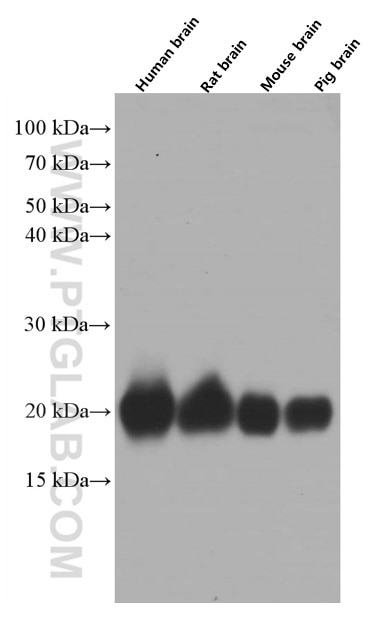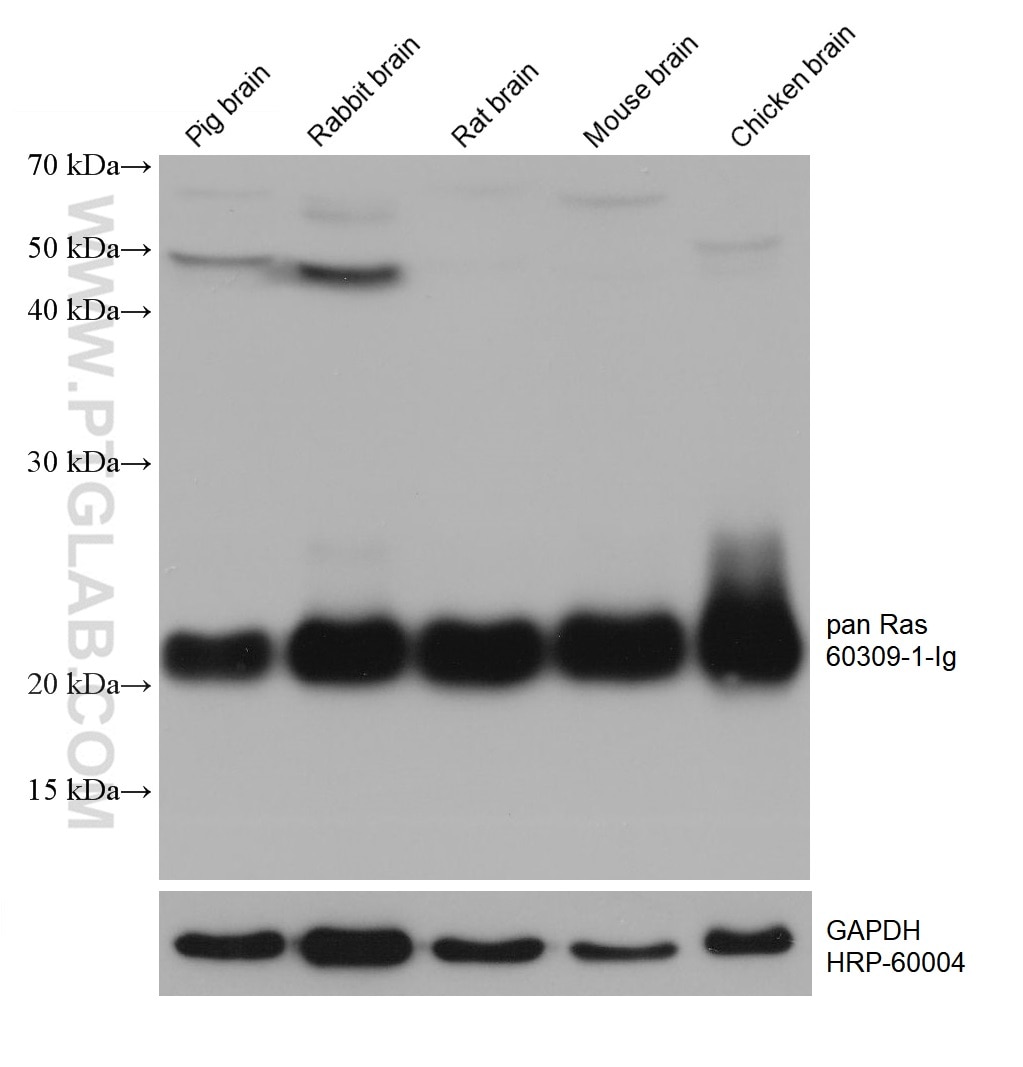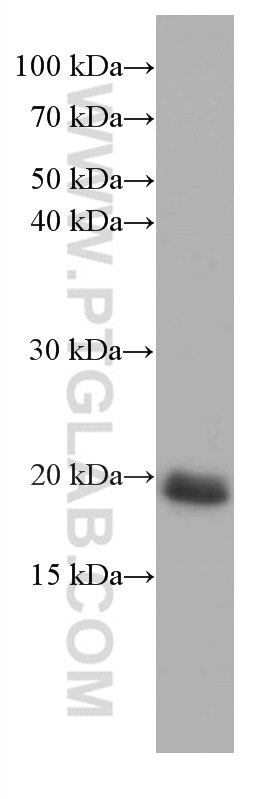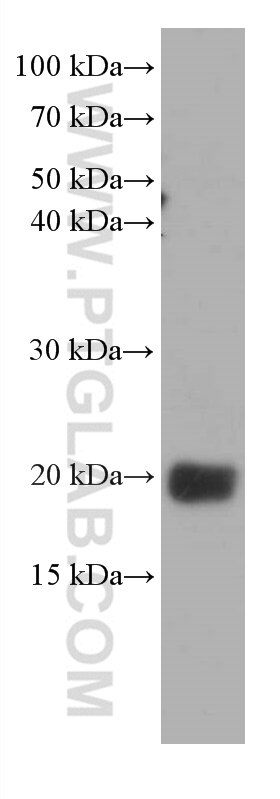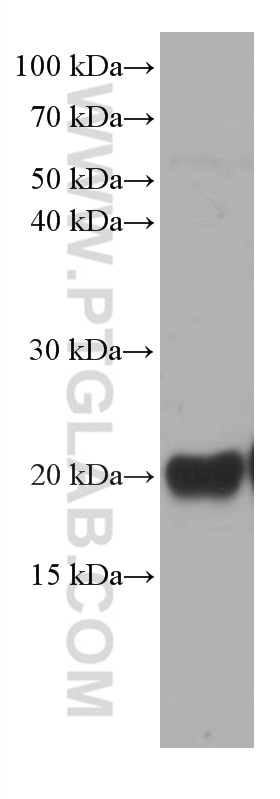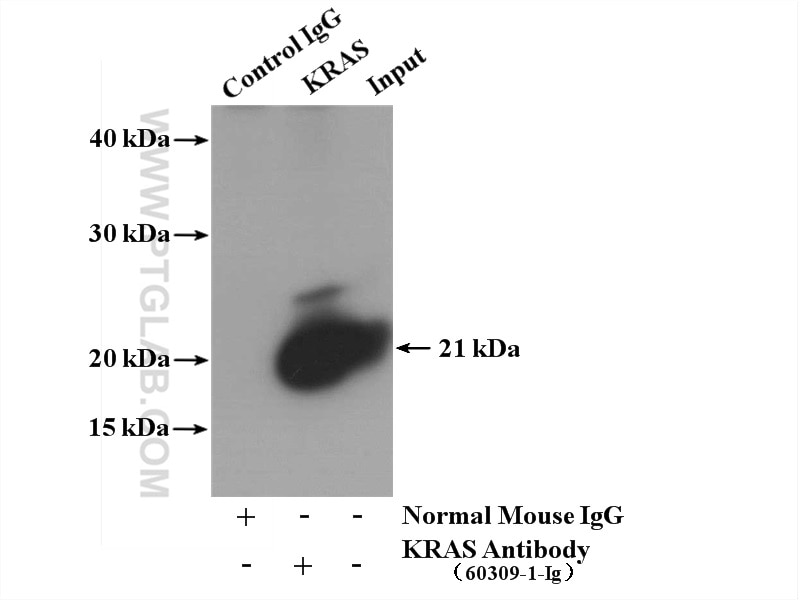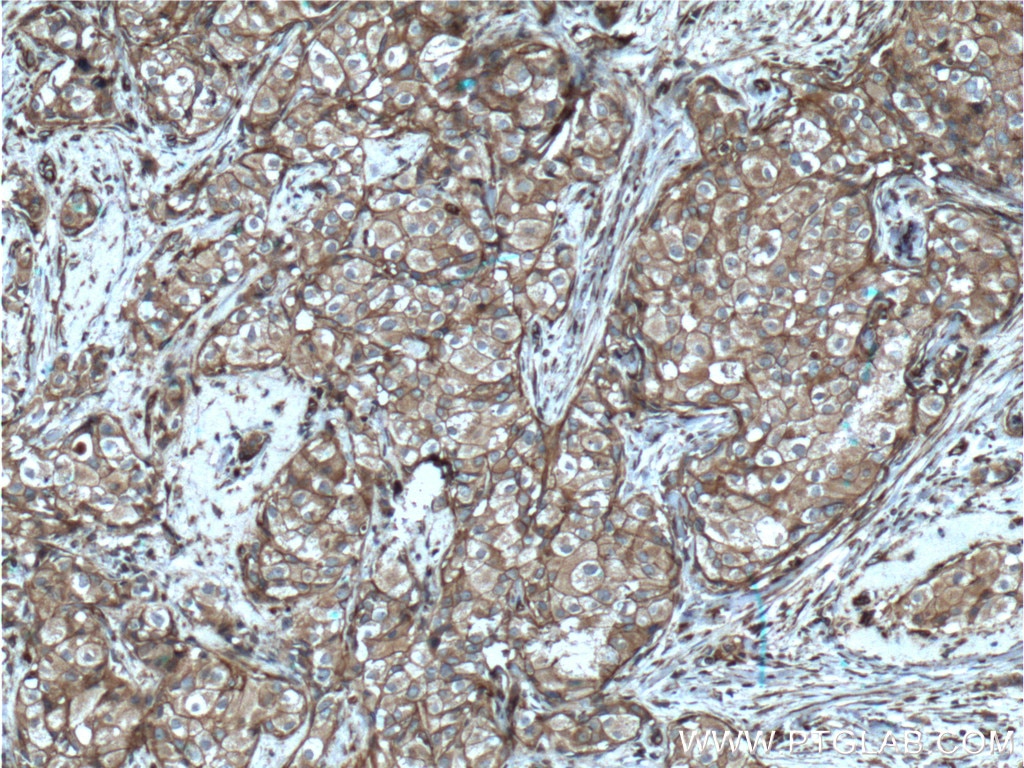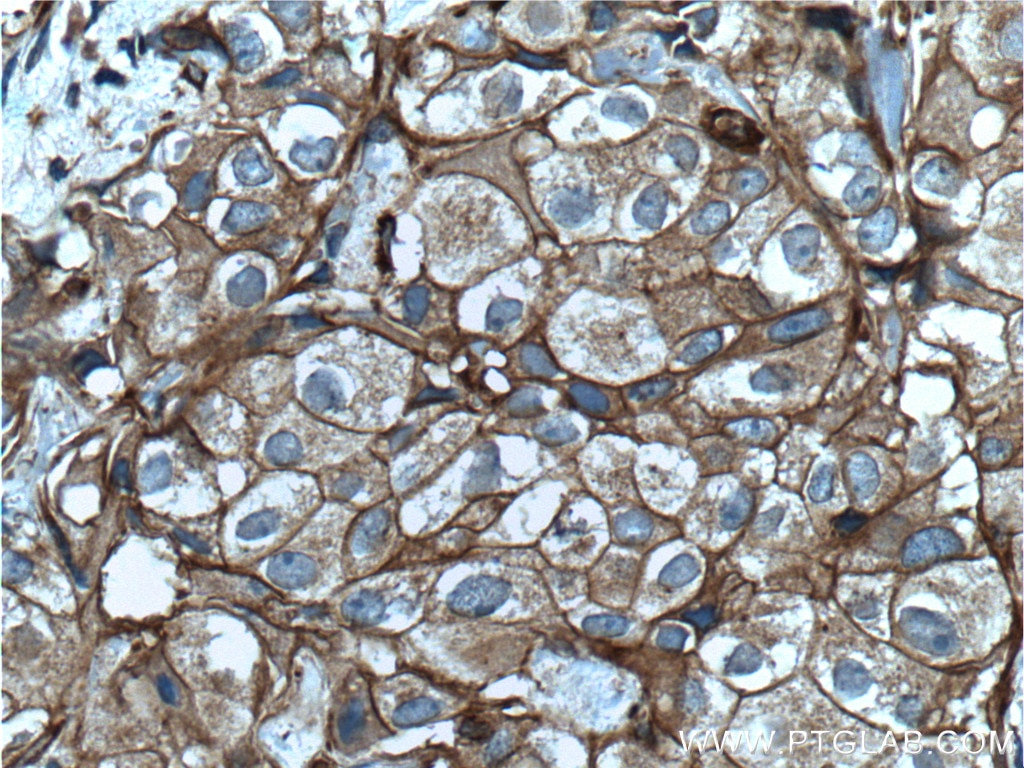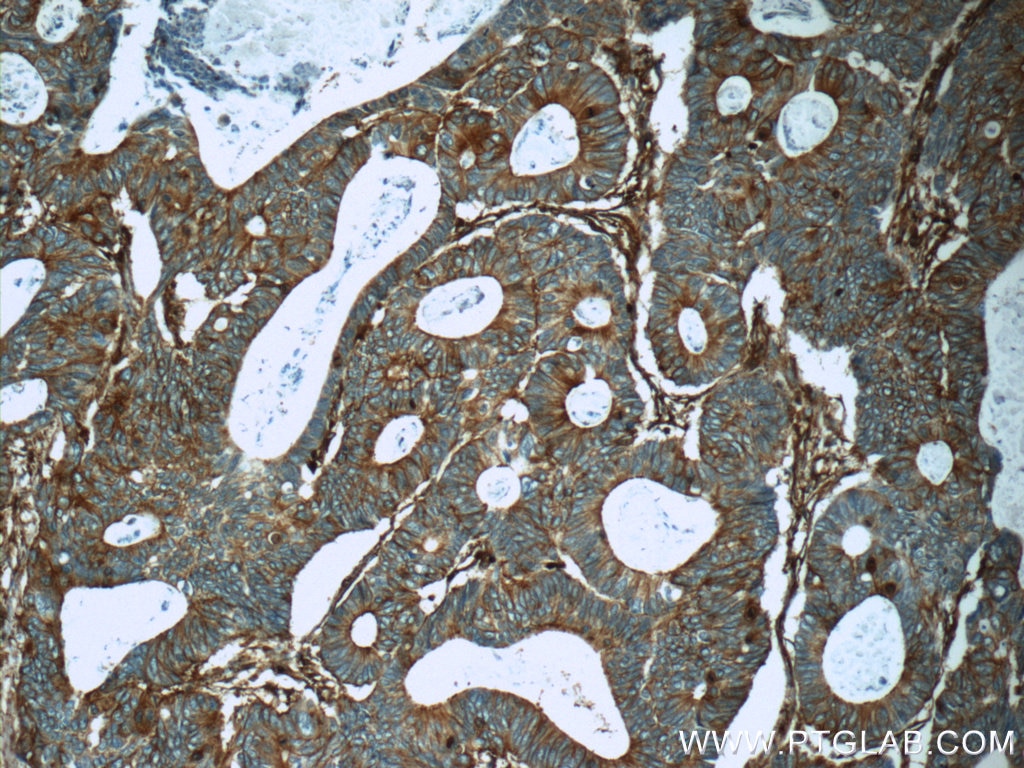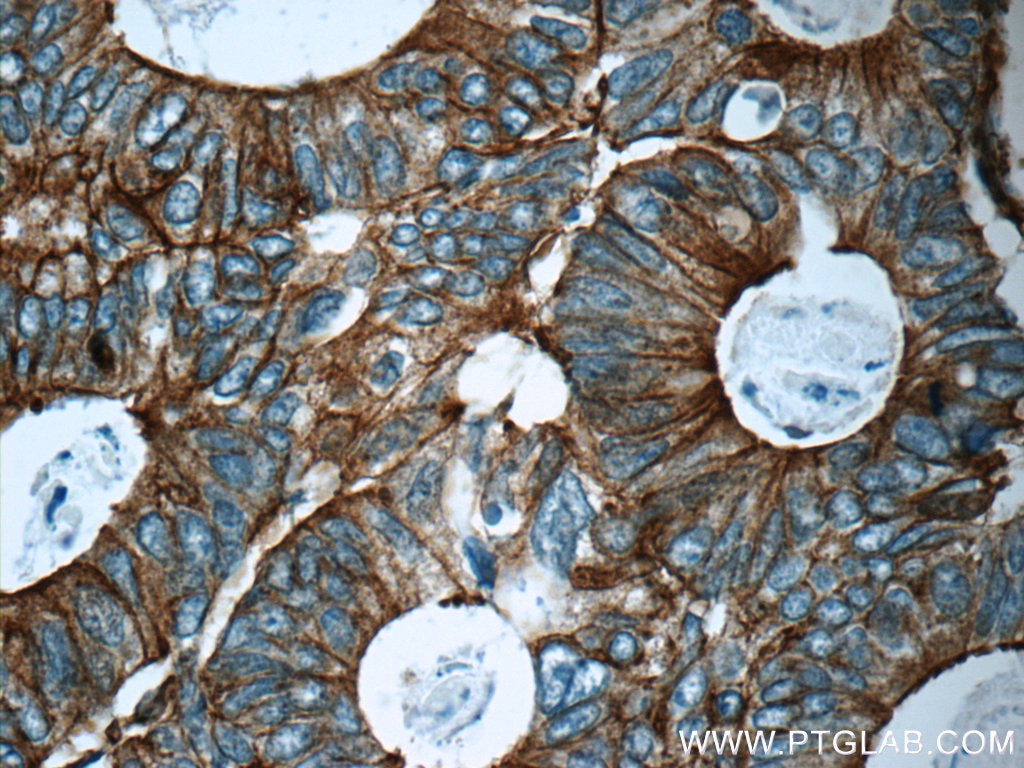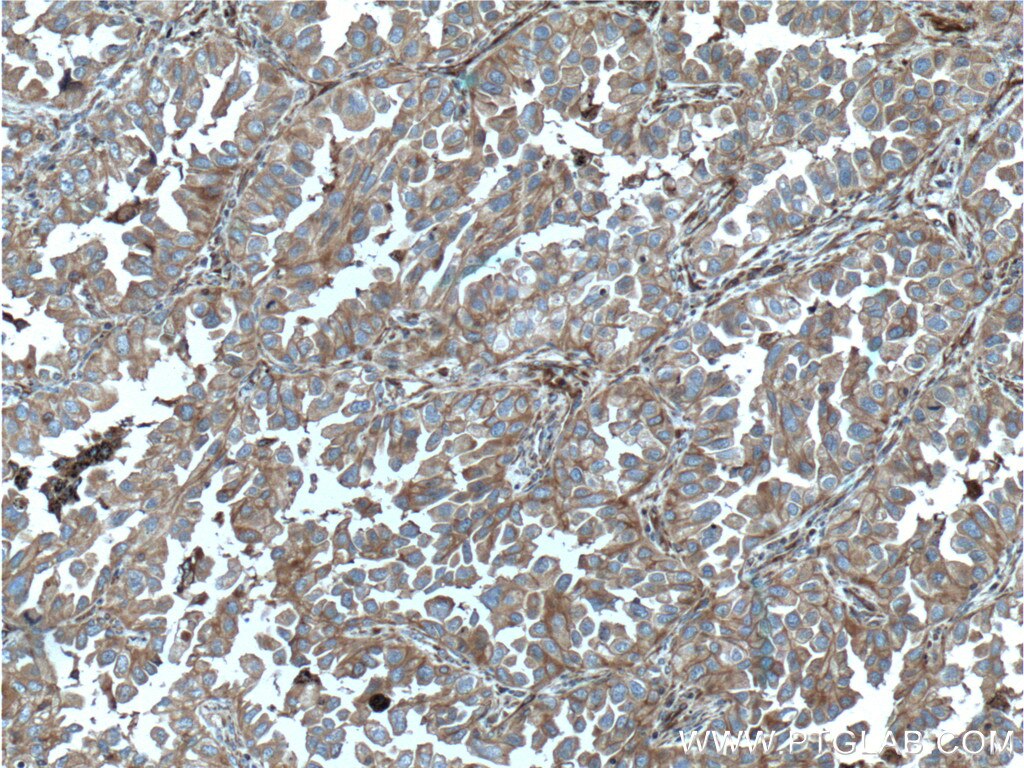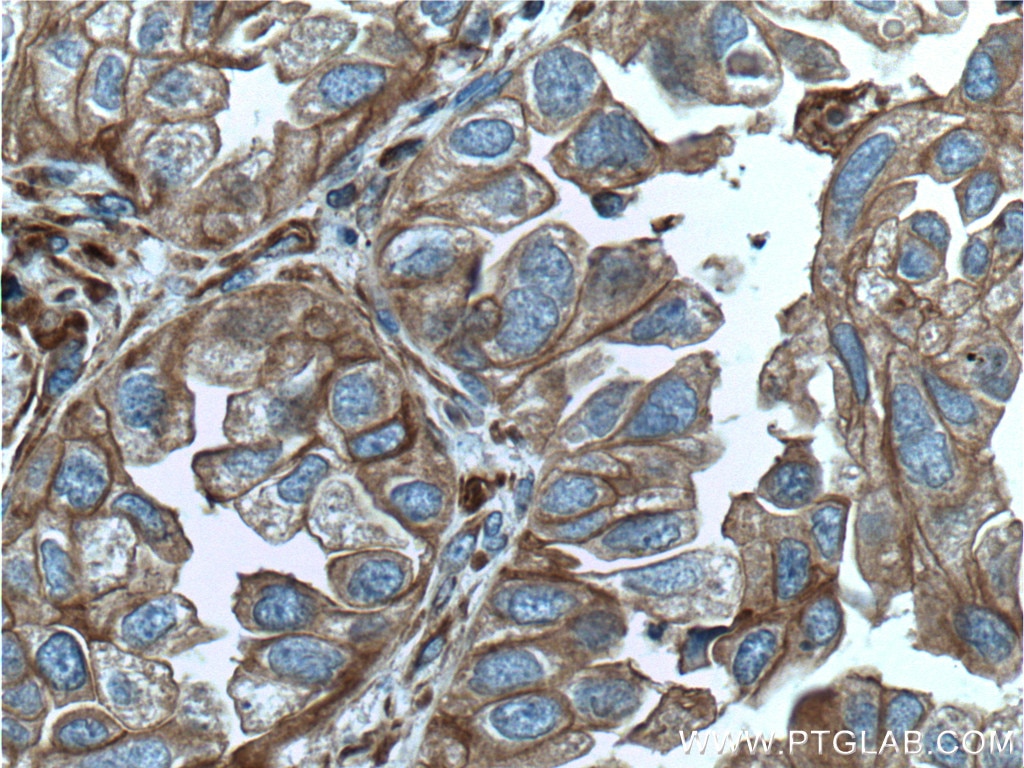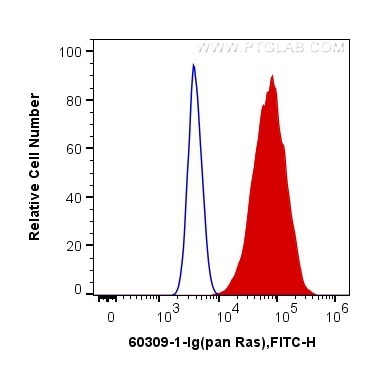- Phare
- Validé par KD/KO
Anticorps Monoclonal anti-pan Ras
pan Ras Monoclonal Antibody for FC (Intra), IHC, IP, WB, ELISA
Hôte / Isotype
Mouse / IgG1
Réactivité testée
Humain, Lapin, porc, poulet, rat, souris
Applications
WB, IP, IHC, IF, FC (Intra), ELISA
Conjugaison
Non conjugué
CloneNo.
4H4G7
N° de cat : 60309-1-Ig
Synonymes
Galerie de données de validation
Applications testées
| Résultats positifs en WB | tissu cérébral humain fœtal, cellules HEK-293, cellules Neuro-2a, cellules ROS1728, tissu cérébral de lapin, tissu cérébral de porc, tissu cérébral de poulet, tissu cérébral de rat, tissu cérébral de souris, tissu cérébral humain |
| Résultats positifs en IP | tissu cérébral de souris, |
| Résultats positifs en IHC | tissu de cancer du sein humain, tissu de cancer du côlon humain, tissu de cancer du poumon humain il est suggéré de démasquer l'antigène avec un tampon de TE buffer pH 9.0; (*) À défaut, 'le démasquage de l'antigène peut être 'effectué avec un tampon citrate pH 6,0. |
| Résultats positifs en cytométrie | cellules HeLa |
Dilution recommandée
| Application | Dilution |
|---|---|
| Western Blot (WB) | WB : 1:20000-1:50000 |
| Immunoprécipitation (IP) | IP : 0.5-4.0 ug for 1.0-3.0 mg of total protein lysate |
| Immunohistochimie (IHC) | IHC : 1:50-1:500 |
| Flow Cytometry (FC) | FC : 0.40 ug per 10^6 cells in a 100 µl suspension |
| It is recommended that this reagent should be titrated in each testing system to obtain optimal results. | |
| Sample-dependent, check data in validation data gallery | |
Applications publiées
| KD/KO | See 1 publications below |
| WB | See 11 publications below |
| IHC | See 4 publications below |
| IF | See 1 publications below |
Informations sur le produit
60309-1-Ig cible pan Ras dans les applications de WB, IP, IHC, IF, FC (Intra), ELISA et montre une réactivité avec des échantillons Humain, Lapin, porc, poulet, rat, souris
| Réactivité | Humain, Lapin, porc, poulet, rat, souris |
| Réactivité citée | rat, Humain, porc, souris |
| Hôte / Isotype | Mouse / IgG1 |
| Clonalité | Monoclonal |
| Type | Anticorps |
| Immunogène | pan Ras Protéine recombinante Ag2700 |
| Nom complet | v-Ki-ras2 Kirsten rat sarcoma viral oncogene homolog |
| Masse moléculaire calculée | 188 aa, 21 kDa |
| Poids moléculaire observé | 21 kDa |
| Numéro d’acquisition GenBank | BC013572 |
| Symbole du gène | KRAS |
| Identification du gène (NCBI) | 3845 |
| Conjugaison | Non conjugué |
| Forme | Liquide |
| Méthode de purification | Purification par protéine A |
| Tampon de stockage | PBS avec azoture de sodium à 0,02 % et glycérol à 50 % pH 7,3 |
| Conditions de stockage | Stocker à -20°C. Stable pendant un an après l'expédition. L'aliquotage n'est pas nécessaire pour le stockage à -20oC Les 20ul contiennent 0,1% de BSA. |
Informations générales
The 21 kDa guanine-nucleotide binding proteins (K-Ras, H-Ras, and N-Ras) belong to the Ras oncogene family, whose members are related to the transforming genes of mammalian sarcoma retroviruses. K-Ras, H-Ras, and N-Ras have similar structure and sequences. These proteins can bind GTP and GDP, and they have intrinsic GTPase activity. The ras genes are ubiquitously expressed although mRNA analysis suggests different level expression in tissue. Mutations in each ras gene frequently were found in different tumors, suggesting their involvement in the development of specific neoplasia. This antibody can recognize K-Ras, H-Ras, and N-Ras.
Protocole
| Product Specific Protocols | |
|---|---|
| WB protocol for pan Ras antibody 60309-1-Ig | Download protocol |
| IHC protocol for pan Ras antibody 60309-1-Ig | Download protocol |
| IP protocol for pan Ras antibody 60309-1-Ig | Download protocol |
| FC protocol for pan Ras antibody 60309-1-Ig | Download protocol |
| Standard Protocols | |
|---|---|
| Click here to view our Standard Protocols |
Publications
| Species | Application | Title |
|---|---|---|
Mol Cell TCR activation directly stimulates PYGB-dependent glycogenolysis to fuel the early recall response in CD8+ memory T cells. | ||
Cancer Res KRAS-NFκB-YY1-miR-489 signaling axis controls pancreatic cancer metastasis.
| ||
Exp Mol Med Destabilization of β-catenin and RAS by targeting the Wnt/β-catenin pathway as a potential treatment for triple-negative breast cancer. | ||
J Cell Mol Med DEPDC1 up-regulates RAS expression to inhibit autophagy in lung adenocarcinoma cells. | ||
Mol Pharm Hyaluronic Acid-Modified Nanoparticles Self-Assembled from Linoleic Acid-Conjugated Chitosan for the Codelivery of miR34a and Doxorubicin in Resistant Breast Cancer | ||
Oncol Rep EGF upregulates RFPL3 and hTERT via the MEK signaling pathway in non‑small cell lung cancer cells. |
